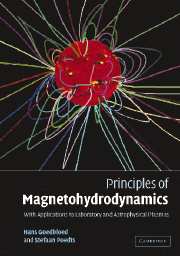1 - Introduction
Published online by Cambridge University Press: 22 February 2010
Summary
Motivation
Under ordinary circumstances, matter on Earth occurs in the three phases of solid, liquid, and gas. Here, ‘ordinary’ refers to the circumstances relevant for human life on this planet. This state of affairs does not extrapolate beyond earthly scales: astronomers agree that, ignoring the more speculative nature of dark matter, matter in the Universe consists more than 90% of plasma. Hence, plasma is the ordinary state of matter in the Universe. The consequences of this fact for our view of nature are not generally recognized yet (see Section 1.3.4). The reason may be that, since plasma is an exceptional state on Earth, the subject of plasma physics is a relative latecomer in physics.
For the time being, the following crude definition of plasma suffices. Plasma is a completely ionized gas, consisting of freely moving positively charged ions, or nuclei, and negatively charged electrons. In the laboratory, this state of matter is obtained at high temperatures, in particular in thermonuclear fusion experiments (T ∼ 108 K). In those experiments, the mobility of the plasma particles facilitates the induction of electric currents which, together with the internally or externally created magnetic fields, permits magnetic confinement of the hot plasma. In the Universe, plasmas and the associated large-scale interactions of currents and magnetic fields prevail under much wider conditions.
- Type
- Chapter
- Information
- Principles of MagnetohydrodynamicsWith Applications to Laboratory and Astrophysical Plasmas, pp. 3 - 33Publisher: Cambridge University PressPrint publication year: 2004



